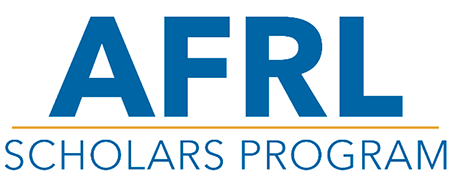Advanced Photovoltaics for Space
Overview
Qualifications
Organization
Overview
Virtually every spacecraft flying uses photovoltaics (aka solar cells) to provide electrical power. Advances in single crystal multi-junction, thin-film, and nano-technology based photovoltaics are important to achieving improved on-orbit performance. The current state of the art photovoltaic cells used for space applications are based on the III-V material systems (eg. GaAs, GaInP). However, innovative and novel material systems capable of more effectively utilizing the solar spectrum could provide tremendous advantages for space missions. For example, recent work examining nano-structures have shown interesting advancements. Some areas of interest for this topic include space environmental effects, electro-optical properties, and performance parameters for candidate material systems. Specific projects can be tailored to students’ interests and skills, but will require a basic understanding of electrical, optical, and materials properties. Students selected for this research opportunity will work with their mentor to develop a productive work plan which will be synergistic with their field of study and the Air Force Research Laboratory’s mission.
Organization: Scholars
working and learning something new every day
Christopher Kerestes
Postdoc

Christopher Kerestes
Chris Kerestes helps the Advanced Space Power Group identify the next generation of power generation and power storage for the Space Vehicles Directorate of the Air Force Research Laboratory. His B.S. degree in Physics with honors comes from Dickinson College where he researched high resonance frequency electronics. A Ph.D. in Electrical and Computer Engineering from University of Delaware was earned after conducting research on implementing silicon solar cells in a Very High Efficiency Solar Cell sub-module. After graduate school an Intelligence Community Post Doctoral Fellowship allowed Chris to get into space photovoltaics with the NanoPower Research Laboratory at Rochester Institute of Technology. Experience and collaborative work conducted under the Fellowship at RIT lead Chris to Emcore which is now SolAero Technologies. Work at SolAero focused on developing next generation solar cells, which included epitaxial growth, semiconductor processing, electrical & optical characterization, semiconductor & optical device modeling, and integration of new technologies that are now today's state of the art technology powering spacecraft. Current research interest lie in the field of power generation and power storage for space applications
Qualifications and Eligibility
Below is a summary of the desired background for the position, and any general requirements. Additional detail may be found in the application.
About the partner
Universities Space Research Association (USRA) administers a three-pronged approach to strengthening the science, technology, engineering, and mathematics (STEM) workforce pipeline that includes: the AFRL Scholars Program, AFRL Scholars Professionals, and the University Research and Engagement Program (UREP). This portfolio of enriching programs aligns directly with the Federal STEM Strategy and Department of Defense (DoD) STEM mission for the U.S. Department of the Air Force by offering immersive project-based learning opportunities for students and postdoctoral fellows.

Media Inquiries
afrl.pa.inquiry@us.af.milBusiness Inquiries
afsbirsttr-info@us.af.milHigher Education Inquiries
collaborate@us.af.milCopyright © 2025 The Air Force Research Laboratory. All rights reserved.
